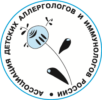The effectiveness of immunomodulatory therapy in the complex treatment of children with chronic diseases of the upper gastrointestinal tract associated with mono and polyinfection with pathogens
E.V. Agafonova 1,2, T.G. Malanicheva 1
1 «Kazan State Medical University» of the Ministry of Healthcare of the Russian Federation, Kazan, Russia
2 «Kazan Research Institute of Epidemiology and Microbiology» Rospotrebnadzor, Kazan, Russia
ALLERGOLOGY AND IMMUNOLOGY IN PEDIATRICS, Volume 54 • Number 3 • September 2018, pp. 31 – 39
DOI: 10.24411/2500-1175-2018-00014
Objective: to study the effectiveness of immunomodulatory therapy in children with chronic diseases of the upper gastrointestinal tract associated with Helicobacter pylori and fungi of the genus Candida.
Materials and methods. The indices of immunological reactivity in children with chronic diseases of the upper gastrointestinal tract with mono and polyinfection (Helicobacter pylori, Candida fungi) with recurrent course and resistance to standard therapy were studied. Groups of children were formed: 1 st – with monoinfection of Helicobacter pylori, 2 nd – with polyifection. The studies were performed against a background of standard and complex therapy with the inclusion of the immunomodulator azoxime bromide.
Results. Differential features of destabilization of immune homeostasis in monoinfection and polyinfection with pathogens were revealed. Associative influence of pathogens forming symbiosis, has a multicomponent effect, deepening the immune imbalance. Inclusion of azoximer bromide in the basic therapy of the immunomodulator resulted in normalization of the quantitative content of immunocompetent cells, expression of activation markers, receptor and functional-metabolic activity of neutrophils on the background of clinical efficacy.
The conclusion. The use of the immunomodulating preparation of azoxime bromide is reasonable and effective in the complex treatment of chronic diseases of the upper gastrointestinal tract in children with mono and polyinfection with pathogens.
- Степанченко А.А. Иммунные нарушения у больных язвенной болезнью, ассоциированной с различными штаммами Helicobacter pylori // Вестник новых медицинских технологий. 2010. № 4. С. 118–121
- Арминов В.Г. Иммунные нарушения в патогенезе хеликобактерного гастрита у детей // Современные тенденции развития науки и технологий. 2016. № 6–4. С. 58–60
- 3. Иммунологические нарушения у детей с хронической гастродуоденальной патологией, осложненной кандидозной инфекцией / Т.Г. Маланичева, Р.А. Файзуллина, Н.В. Зиатдинова и др. // Практическая медицина. № 5 (53). С. 70–73
- Maui I., Stumoyama T., Fukuda S. Association of gastric epithelial apoptosis with ability of Helicobacter pylon to induce a neutrophil oxidative burst // J. Med. Microbiol. 2009. Vol. 49, № 6. С. 521–524.
- Fungi that Infect Humans / B. Hube, R. Puccia, A. Casadevall et al. // Microbiol Spectr. 2017. Vol. 5, № 3. doi: 10.1128/microbiolspec.FUNK-0014-2016.
- Mannosylation in Candida albicans: role in cell wall function and immune recognition / A. Rebecca, A. Hall, R. Gow et al. // Gow Mol. Microbiol. 2013. Dec. Vol. 90, № 6. С. 1147–1161.
- Candida mannan: chemistry, suppression of cell-mediated immunity, and possible mechanisms of action / R.D. Nelson, N. Shibata, R.P. Podzorski et al. // Clin. Microbiol. Rev. 2009. Vol. 4, № 1. P. 1–19.
- Хаитов P.M., Пинегин Б.В. Современные представления о механизме действия полиоксидония // Иммунология. 2005. № 5. С. 197–205.
- Иммунобиосенсорный метод экспресс-диагностики микозов / Е.В. Халдеева, Н.И. Глушко, Т.Г. Маланичева и др. // Успехи медицинской микологии. 2000. Т. 1, № 2. С. 7–8.
- Нестерова И.В. Алгоритмы обследования пациентов со вторичными иммунодефицитными состояниями, сопровождающимися ведущим синдромом вирусно-бактериальной инфекции // Inter. J. Immunorehabilitation. 2000. № 1. С. 72–86.
- Порядин Г.В, Салмаси Ж.В., Казимирский А.Н. Активационные маркеры лимфоцитов как показатели дизрегуляции иммунной системы при воспалении // Патологическая физиология и экспериментальная терапия. 2006. № 1. С. 2–7
- Bettini M., Vignali D.A. Regulatory T cells and inhibitory cytokines in autoimmunity // Curr. Opin. Immunol. 2009. № 6. P. 612–618.
- Phenotypic and functional evaluation of CD3+CD4-CD8- T cells in human CD8 immunodeficiency / I. Bernardo, E. Mancebo, I. Aguiló et al. Haematologica. 2011. Vol. 96, № 8. P. 1195–1203.
- Kinjo Y., Kitano N., Kronenberg M.J. The role of invariant natural killer T cells in microbial immunity // Infect. Chemother. 2013. Vol. 19, № 4. P. 560–570.
- Characterization of human invariant natural killer T cells expressing FoxP3 / P. Engelmann, K. Farkas, J. Kis et al. // Int. Immunol. 2015. Vol. 23, № 8. P. 473–484.
- A role for IL in human neutrophil apoptosis / J. Hirata, J. Kotani, M. Aoyama et al. // Shock. 2008. Vol. 30, № 6. P. 628–633.
- Tumor necrosis factor-alpha (TNF-alpha) induces integrin CD11b/CD18 (Mac-1) up-regulation and migration to the CC chemokine CCL3 (MIP-1alpha) on human neutrophils through defined signalling pathways / F. Montecucco, S. Steffens, F. Burger et al. // Cell Signal. 2008. Vol. 20, № 3. P. 557–568.
- Direct modulation of human neutrophil behaviour by Candida albicans / V. Vuddhakul, W.K. Seow, J.G. McCormack et al. // Int. Arch. Allergy Appl. Immunol. 2010. Vol. 90, № 3. P. 291–299.
- An integrated model of the recognition of Candida albicans by the innate immune system / M.G. Netea, G.D. Brown, B.J. Kullberg et al. // Nat. Rev. Microbiol. 2008. № 6. P. 67–78.
Agafonova EV, Malanicheva TG. The effectiveness of immunomodulatory therapy in the complex treatment of children with chronic diseases of the upper gastrointestinal tract associated with mono and polyinfection with pathogens. Allergology and Immunology in Pediatrics. 2018;54(3):31-39. (In Russ.) https://doi.org/10.24411/2500-1175-2018-00014
For correspondense
E.V. Agafonova
email: аgafono@mail.ru.
T.G. Malanicheva
email: tgmal@mail.ru.
